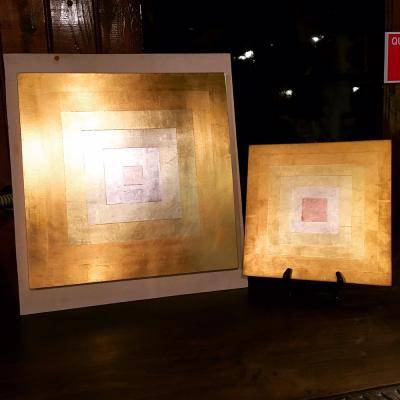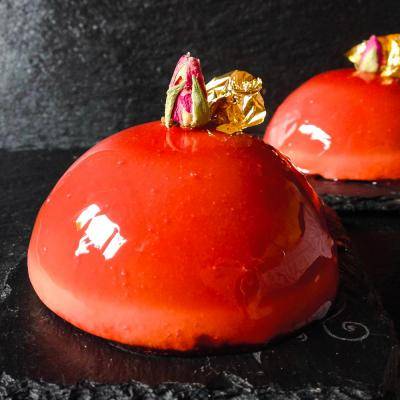In the sestiere of Cannareggio, inside a historic palace once inhabited by the great painter Titian, is the workshop of Mario Berta Battiloro, a testament to the ancient art of gold leaf working.
Founded in 1926 by Mario Berta, this family business has been lovingly handed down to the current generation. Until the end of the summer of 2024, spouses Marino Menegazzo and Sabrina Berta worked together with their daughters and other colleagues, united in their intent to preserve this age-old technique. In keeping with the lab's Mission Statement of “materially transform materials to continually seek new uses and potential applications", the daughters have explored and realized other applications of gold leaf in the food and cosmetic industries. Their initiative has formed a new demand, offering the possibility of incorporating gold leaf, and its benefits, into gourmet cuisine and anti-ageing products.
The process of creating gold leaf, which transforms the raw material into very thin sheets of a few microns, begins with the melting stage. This operation brings the precious metal to a liquid state, removing all its impurities, and then solidifying it into the characteristic ingot shape. This steric transformation of the material is preparatory to the subsequent activity of rolling, which thins it by transforming it into a foil from which individual squares of raw material are obtained. The sections are used in the filling phase, stacked one on top of the other, separated by special papers, and then they undergo the first session of beating. The semi-finished leaves thus obtained, cut into four parts and repositioned one on top of the other, are then subjected to a second manual beating carried out by master Marino Menegazzo that brings them to the desired final thickness through the use of hammers weighing between 3 and 8 kilograms, in sessions that can last up to two hours each. Every type of leaf requires a specific number of beats and rotations. Finally, with extreme precision, the resulting sigh-thin leaves are cut and packed in the appropriate cases.
The result is extraordinarily delicate sheets of gold that are meticulously divided and organized by hand. They are so thin that even breathing has to be controlled and adjusted so that the leaves do not fly off while handing them.
The gold leaves of this workshop adorn unique masterpieces, including the mosaics of St. Mark's Basilica, the decorations of St. Mark's bell tower, the golden sphere atop Punta della Dogana, and the iconic Madonnina of Milan Cathedral.
The tradition of gold leaf craftsmanship entered Venice from Byzantium around the year 1000, then flourished during the Renaissance, when the city became an important center of craftsmanship. Venice was home to about 300 goldbeaters and became famous for the unique application of this craft, which was used to embellish glassware and the sumptuous tableware of aristocratic families. However, this craft begun its decline in the 1700s due to competition from cheaper machine-made alternatives. In more recent times, the difficulty in finding dedicated apprentices has decreed an increasing thinning of this practice.
Goldbeating is more than a craft: it is an ancient practice that requires dedication and mentorship, intimately connected with nature. There are no manuals or courses to master this art, only the timeless wisdom passed down from generation to generation. As Marino Menegazzo explains, perfecting this craft requires being attuned to the subtle changes of gold, which is affected by time and tides. It also requires great dedication and discipline, given the long learning times and repetitiveness of the moves.
Today, Mario Berta Battiloro is a rare (one might even say unique) gem: the last family of goldbeaters in Europe. As announced a few months ago, unfortunately, the workshop will close its doors in January 2025. With this closure comes the poignant reality of preserving not only the art of goldbeating, but also the tools and techniques that have defined this centuries-old know-how.
To honour this rich tradition and keep the Battiloro memory alive, the family is actively seeking to preserve the workshop's legacy. They hope to find a foundation, museum, exhibition space or similar institution willing to house the tools and machinery, pieces of Venice's cultural heritage, which date back to 1926.
In undertaking this search, the Battiloro family invites your participation.
If you know of places or organizations interested in being able to house and enhance these historic instruments and the rich history they carry, please contact Venice Original. Your support could ensure that the art of goldbeating continues to inspire future generations, allowing the values and skills of this ancient craft to endure. Join us in celebrating and preserving the skill and heritage of the Mario Berta Battiloro workshop.
Together, we can honour a tradition that has shaped the fabric of Venice.




